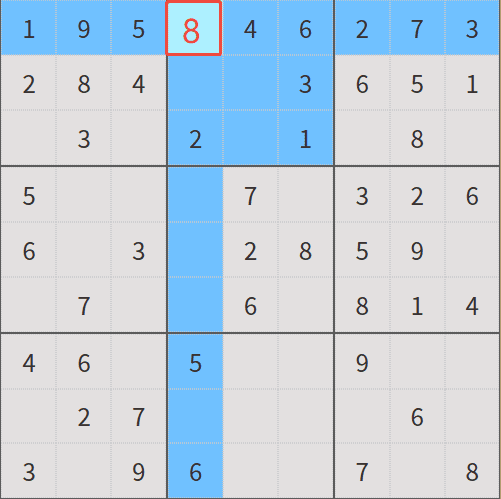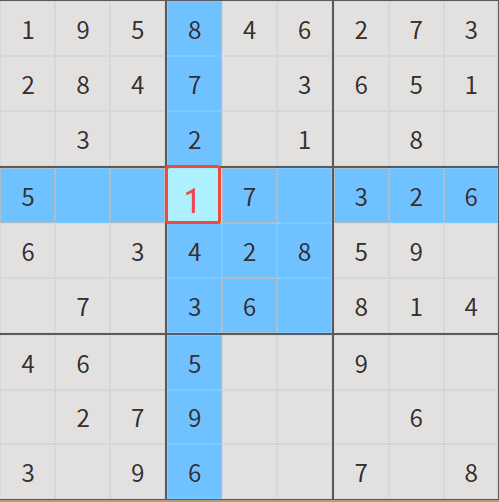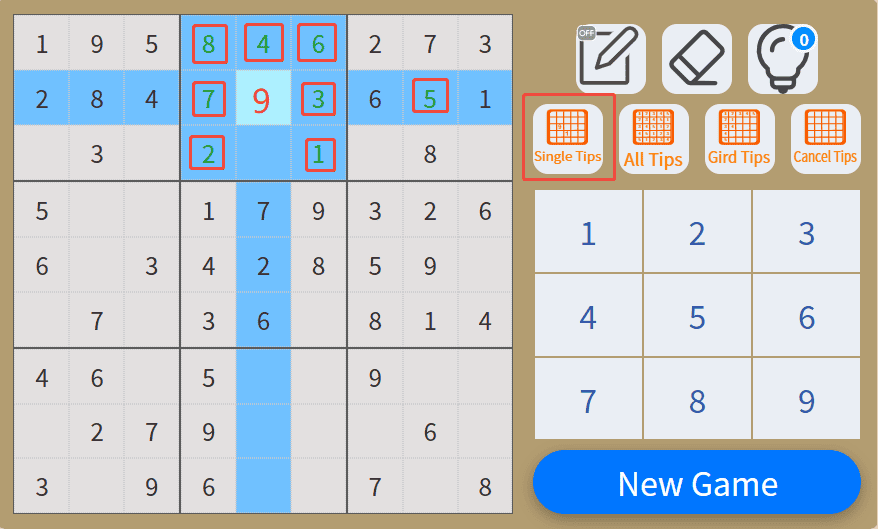In a 9×9 Classic Sudoku game, every row, column, and 3×3 grid must contain a number from 1-9, and the numbers cannot be repeated. The “Naked Single” trick is the most basic trick for beginners. Here are three classic scenarios:

Sudoku Row Completion
When there is only one cell left empty in a row (as shown below), just find the missing number from 1-9.
Example: If a row contains [1, 9, 5,__ , 4, 6, 2, 7, 3], the missing number must be 8.

Sudoku Column Completion
Apply the same logic to the incomplete column.
Example: In a column showing [8, 7, 2, __, 4, 3, 5, 9, 6], the empty cell obviously needs 1.

Sudoku 3×3 Box Completion
Each 3×3 subgrid follows the same rules.
For example: the box containing [1, 7, 9 | 4, 2, 8 | 3, 6, __] can only be filled with 5.

This basic strategy forms the basis of Sudoku solving. By systematically checking for cells in rows, columns, and boxes that have only one possible solution, beginners can confidently fill in the blanks while still following the core rules of Sudoku.
Of course, this is an obvious, single-spaced space that can be seen at a glance.
Let’s look at a slightly more complex single-spaced technique using the three mixed rules of rows, columns, and 3×3 squares.
As shown below, our “Single Tips” button also provides a space for finding single-spaced spaces.
The row, column, and 3×3 square where the current space is located already has non-repeating [1, 2, 3, 4, 5, 6, 7, 8, _], so the current single-spaced space can only be filled with 9

OK, now that you have mastered the naked order technique, you can go play a free Easy Sudoku game
February 19, 2025